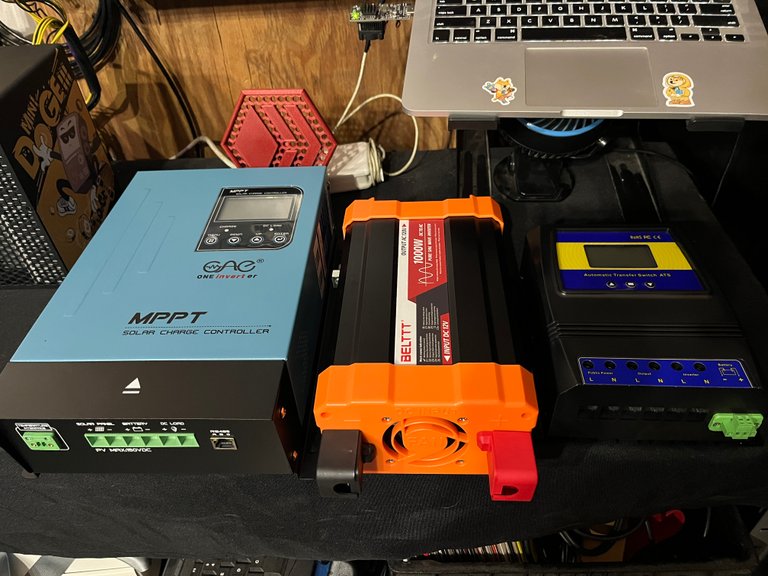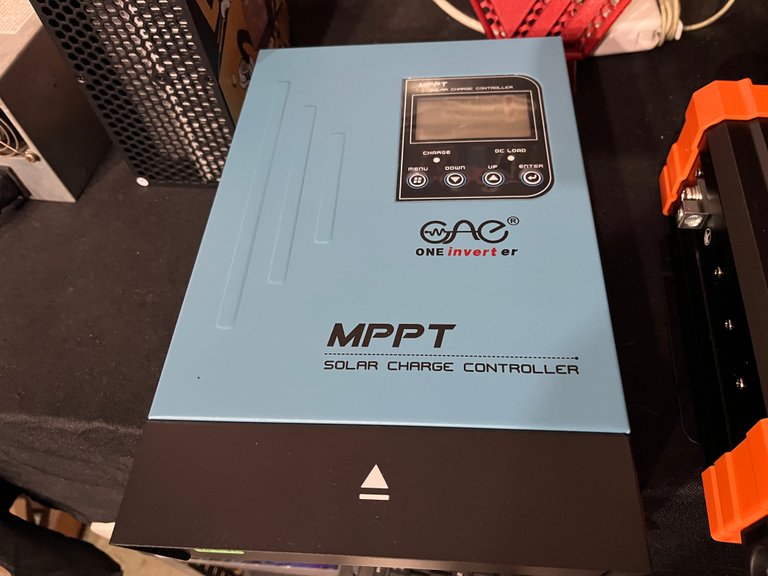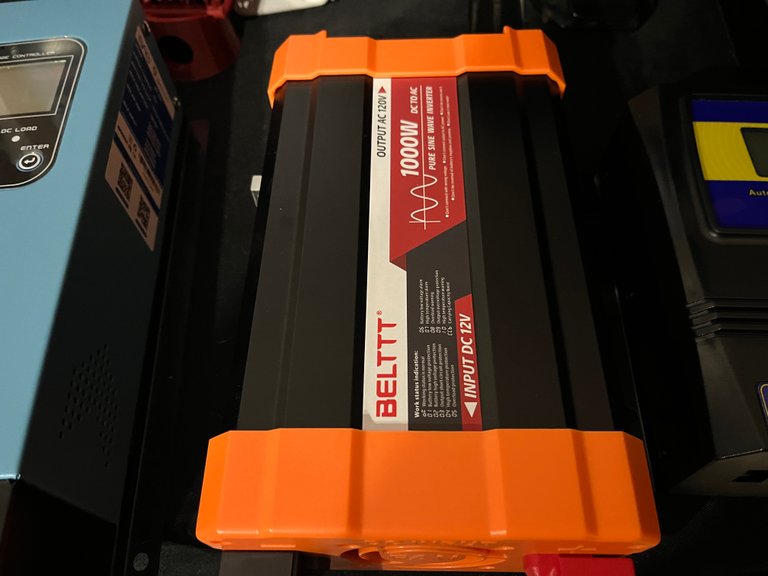
There is quite a bit that goes into building out a solar power system. It's not just panels and batteries, but there are different pieces you need to tie it all together and regulate the power so you don't blow something up. And the bigger the system you get, the bigger components you need to go along with it to handle the power that is going to be brought in from the sun through the panels. Today, all of my components came in and now all I am waiting on are the panels and batteries! So get ready for a little lesson in solar powered electricity!
Solar Charge Controller

The solar charge controller is like the brains of your solar power system. Its job is to optimize the power coming from your solar panels and ensure it gets delivered efficiently to your battery bank. Solar panels produce variable voltage and current depending on sunlight conditions, and an MPPT controller continuously tracks the best voltage and current combination to maximize the energy harvest. It steps down the high voltage from the panels to a level that matches the battery, all while it is boosting the current for charging. This means more efficient energy transfer and less wasted power. It's a pretty vital piece to the puzzle.
There are 2 types of solar charge controllers, MPPT (Maximum Power Point Tracking) and PWM (Pulse Width Modulation). The main difference between a MPPT and a PWM controller come with how they manage power from the solar panels. A PWM controller is simpler and works by directly connecting the solar panels to the battery, effectively lowering the panel voltage to match the battery's, which can lead to energy loss. An MPPT controller, on the other hand, is more advanced and adjusts the voltage and current dynamically to find the "sweet spot" where the panels produce the most power. This allows it to convert excess voltage into additional current, making MPPT controllers significantly more efficient, especially in systems with higher voltage solar arrays or in changing light conditions.
Pure Sine Wave Inverter

A pure sine wave inverter is what turns the stored energy in your batteries into usable power for your home or whatever you are trying to power. Batteries produce direct current (DC), but most appliances and electronics run on alternating current (AC). The pure sine wave inverter takes that DC power and converts it into a smooth, clean AC signal that's nearly identical to what you'd get from the grid.
This is especially important for sensitive electronics like computers, TVs, and anything else that requires stable power to function properly. With a pure sine wave inverter, you can run your gear without worrying about noise, glitches, or potential damage caused by lower-quality power. Modified sine wave inverters are great for things like power tools, running light, etc, but for your sensitive electronics, you want the pure sine wave.
Automatic Transfer Switch

The automatic transfer switch is your system's safety net for when solar power isn’t enough to keep things running. It's an optional piece to the system and is not needed if you are going to be running things fully off the grid. This device monitors the battery voltage and automatically switches the load to grid power when the battery drops below a set level. Once your battery has recharged to a pre-set voltage, the switch moves the load back to solar power.
This seamless process helps protect your batteries from being over-discharged, which can shorten their lifespan, while also making sure that your equipment always has a reliable power source. It’s a hands-free solution that keeps your system running smoothly without constant monitoring. With the fact that I am running crypto miners on this setup, I want the option to have them powered on the grid if the batteries start to run dry.
So when you are thinking about setting up a solar system, make sure you are doing your research and getting the components that are going to serve you and your power needs. For my system, I am happy I went ahead and bought the automatic transfer switch to cover me if the sun isn't quite cover my rig's power needs, even though I also bought 2 massive batteries that I am going to string together. So you need to think about your needs, and most importantly, your budget! Each of these components were an average of $100 each. That isn't even including the wiring I need to get them all setup. So make sure you budget for costs and then some! But, all in all, it is going to be worth it to have the ability to mine some Dogecoin, Litecoin, and Monero all off of solar power!
Until next time...
Be cool, be real, and always abide with you my dudes!

Posted Using INLEO

